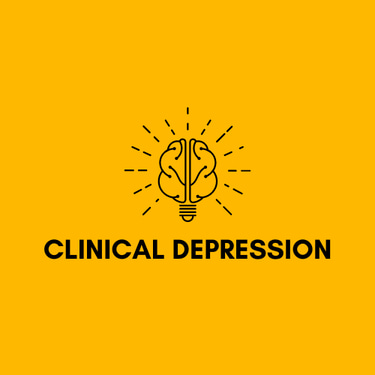For Questions: Text (833)233-0869
Depression Teletherapy: A Comprehensive Guide to Managing Anxiety and Depression


In today’s fast-paced world, mental health concerns like anxiety and depression have become increasingly prevalent. With the rise of technology and the need for accessible mental health care, depression teletherapy has emerged as a valuable solution. This guide explores the benefits, challenges, and effectiveness of depression teletherapy, providing insights into how it can be an essential tool in managing anxiety and depression.
Understanding Depression and Anxiety
Before delving into depression teletherapy, it's crucial to understand the conditions it addresses. Depression and anxiety are two of the most common mental health disorders, often occurring together and significantly impacting a person's quality of life.
Depression is characterized by persistent feelings of sadness, hopelessness, and a lack of interest in activities that once brought joy. It can affect one's ability to work, sleep, eat, and enjoy life. Depression is not just a passing mood; it requires professional treatment to manage effectively.
Anxiety involves excessive worry, fear, and apprehension about everyday situations. It can manifest in physical symptoms such as rapid heart rate, sweating, and dizziness. Like depression, anxiety can be debilitating, affecting daily functioning and overall well-being.
What is Depression Teletherapy?
Depression teletherapy refers to the delivery of therapeutic services via digital platforms, allowing individuals to receive mental health care from the comfort of their homes. This form of therapy typically involves video calls, phone calls, or text messaging with licensed mental health professionals.
Teletherapy offers a convenient and flexible alternative to traditional in-person therapy, making it easier for individuals to access the care they need. It is especially beneficial for those who may face barriers to in-person therapy, such as living in remote areas, having limited mobility, or dealing with time constraints.
The Benefits of Depression Teletherapy
Accessibility: One of the most significant advantages of depression teletherapy is its accessibility. It eliminates geographical barriers, allowing individuals in rural or underserved areas to connect with mental health professionals. Additionally, it can be a lifeline for those with physical disabilities or chronic illnesses that make travel challenging.
Convenience: Depression teletherapy provides the convenience of receiving therapy from anywhere with an internet connection. This flexibility is particularly appealing to those with busy schedules, parents with young children, or individuals who travel frequently.
Comfort and Privacy: Many people feel more comfortable discussing their mental health concerns from the privacy of their own homes. Teletherapy allows individuals to choose a setting where they feel safe and secure, which can lead to more open and honest communication with their therapist.
Reduced Stigma: The anonymity of teletherapy can help reduce the stigma often associated with seeking mental health treatment. Individuals who may feel embarrassed or ashamed to visit a therapist in person might be more inclined to seek help through teletherapy.
Cost-Effectiveness: Depression teletherapy can be more affordable than traditional therapy. Without the need for travel, individuals can save on transportation costs. Additionally, some teletherapy platforms offer sliding scale fees or accept insurance, making therapy more financially accessible.
Continuity of Care: Teletherapy ensures continuity of care, even in situations where in-person therapy may be disrupted, such as during a pandemic or personal emergency. This consistency is vital for individuals managing chronic mental health conditions like depression and anxiety.
How Does Depression Teletherapy Work?
Depression teletherapy typically follows a similar process to in-person therapy, with a few key differences in the mode of communication. Here’s how it generally works:
Assessment: The process begins with an initial assessment, where the therapist gathers information about the individual's symptoms, history, and treatment goals. This step is crucial for developing a tailored treatment plan.
Treatment Plan: Based on the assessment, the therapist creates a personalized treatment plan. This plan may include various therapeutic approaches, such as cognitive-behavioral therapy (CBT), mindfulness-based therapy, or medication management.
Regular Sessions: Teletherapy sessions are scheduled regularly, usually weekly or bi-weekly. During these sessions, the therapist and client discuss progress, challenges, and strategies for managing symptoms. Video calls are the most common mode of communication, but some platforms also offer phone or text-based sessions.
Homework and Self-Management: Therapists may assign homework or self-management techniques to help individuals practice skills learned during sessions. This may include journaling, mindfulness exercises, or tracking mood and behavior patterns.
Ongoing Support: In addition to scheduled sessions, many teletherapy platforms offer ongoing support through messaging or email. This allows clients to reach out to their therapist between sessions if they need guidance or reassurance.
The Effectiveness of Depression Teletherapy
Research has shown that depression teletherapy can be as effective as in-person therapy for many individuals. Several studies have demonstrated significant improvements in symptoms of depression and anxiety through teletherapy, with outcomes comparable to traditional therapy.
Cognitive-Behavioral Therapy (CBT), a common treatment for depression and anxiety, has been found to be particularly effective when delivered via teletherapy. CBT helps individuals identify and change negative thought patterns and behaviors that contribute to their symptoms. The structured nature of CBT makes it well-suited for teletherapy, where therapists can guide clients through exercises and provide feedback in real-time.
Mindfulness-Based Therapy is another approach that has shown positive results in teletherapy settings. This type of therapy focuses on helping individuals stay present in the moment and develop a non-judgmental awareness of their thoughts and feelings. Teletherapy platforms often incorporate mindfulness exercises and guided meditations into sessions, which clients can practice at home.
Medication Management is also a key component of depression treatment for many individuals. Teletherapy allows for regular check-ins with a psychiatrist or primary care physician to monitor the effectiveness of medication and make any necessary adjustments.
Challenges and Limitations of Depression Teletherapy
While depression teletherapy offers many benefits, it is not without its challenges. Understanding these limitations can help individuals make informed decisions about their mental health care.
Technology Issues: Teletherapy relies on stable internet connections and access to technology, which may not be available to everyone. Technical difficulties during sessions can disrupt the flow of therapy and may cause frustration for both the client and therapist.
Lack of Physical Presence: Some individuals may feel that the lack of physical presence in teletherapy limits the therapeutic experience. Body language, eye contact, and other non-verbal cues play a significant role in communication, and these can be harder to interpret through a screen.
Privacy Concerns: While teletherapy offers privacy in terms of location, there may be concerns about the confidentiality of online communications. It’s essential to choose a reputable teletherapy platform that uses encryption and other security measures to protect client information.
Suitability for Severe Cases: Teletherapy may not be suitable for individuals with severe mental health conditions, such as those at high risk of self-harm or experiencing psychosis. In these cases, in-person therapy or more intensive treatment may be necessary.
Insurance Coverage: While many insurance plans now cover teletherapy, there can still be discrepancies in coverage, especially across different states or countries. It’s important to verify with your insurance provider whether teletherapy is covered under your plan.
Choosing the Right Depression Teletherapy Platform
With the growing popularity of teletherapy, numerous platforms offer mental health services online. Choosing the right platform is crucial for ensuring a positive therapeutic experience. Here are some factors to consider:
Licensed Therapists: Ensure that the platform employs licensed mental health professionals with the appropriate credentials to provide therapy in your state or country.
Specialization: Look for platforms that specialize in treating depression and anxiety. Therapists with experience in these areas are more likely to provide effective treatment.
User Experience: Consider the platform’s user interface and ease of use. A platform that is difficult to navigate can add unnecessary stress to the therapy process.
Cost and Insurance: Compare the costs of different platforms and check whether they accept your insurance. Some platforms offer sliding scale fees based on income, which can make therapy more affordable.
Security and Privacy: Choose a platform that prioritizes security and privacy. Look for features like end-to-end encryption and HIPAA compliance, which ensure that your personal information is protected.
Reviews and Testimonials: Reading reviews and testimonials from other users can provide insight into the platform’s effectiveness and the quality of care provided.
Conclusion: Is Depression Teletherapy Right for You?
Depression teletherapy offers a convenient, accessible, and effective option for managing anxiety and depression. Whether you’re struggling with mild symptoms or dealing with a more severe mental health condition, teletherapy can provide the support you need to improve your quality of life.
However, it’s important to weigh the benefits against the potential challenges and limitations. For some, the lack of physical presence may be a drawback, while others may find that teletherapy’s flexibility and convenience outweigh any disadvantages.
Ultimately, the decision to pursue depression teletherapy should be based on your personal needs, preferences, and circumstances. If you’re considering teletherapy, take the time to research different platforms, consult with mental health professionals, and consider a trial session to determine if it’s the right fit for you.
By embracing the possibilities of teletherapy, you can take a proactive step towards managing your mental health and reclaiming your life from the grip of anxiety and depression.
©2025
Clinical Depression
For Questions: Text
(833) 233-0869
